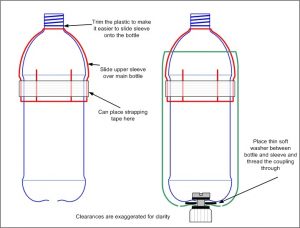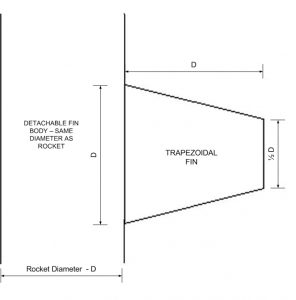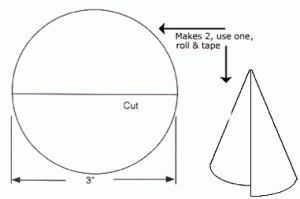You need to get the Physics of air and water pressure right if you want this experiment to be a success. More explanation on that, later. First, let us get the facts right. A water bottle rocket is a type of model rocket that uses water as the reaction mass. The water is forced out by compressed or pressurized air. They can be used in science Olympiads. The construction is quite easy and children can do this in the lab.

How to Build a Water Bottle Rocket
Objective/Purpose
Making your own water bottle rocket.
Hypothesis
The water powered bottle rocket flies on pumping in air.
Materials
- Empty plastic bottle (a 2 liter soda pop bottle would be fine)
- Piece of cardboard made into a cone and 4 fins
- Pump with a needle adaptor
- Water
- Cork
Step By Step Instructions
- Pass the needle adaptor through the cork in such a way that it goes all the way through. You might have to trim the cork for this.
- Attach the cone to the base of the bottle and the fins to the sides.
- Make the bottle a quarter full with water and insert the cork in tightly to close it.
- For launching, take the bottle outdoors and connect the pump to the needle adaptor.
- The bottle should be made to stand inverted on its fins.
- Pump air into the bottle and watch the rocket take off with force.
Don’t stand too close to the rocket as water would be squirted out in all possible directions. The conclusion or result would be that the water bottle rocket could fly. Prepare a neat data sheet with the measurements, calculations, if any and present the lab report if you do the simple activity in school as a lab assignment. You can note the trajectory of the system for a vertical launch and launch at an angle in the report. A proper introduction, theory, design method, math and sketch are indispensable for the technical report.
Video
Water Bottle Rocket Designs
The various parts of a rocket, especially the nose cone, nozzle and fins, need careful designing for aerodynamical grace. You will get more ideas from the below diagrams.




Water Bottle Rocket Fins
The fins should be firm and not floppy. Cardboard and Styrofoam board are good materials. Duct tape can secure them firmly to the rocket body. The best designs of rockets that fly long distances and have greater hang times (the time they hang in the air) are those which have long and narrow fins. They give direction and guidance to your craft. For stability and security, the minimum number should be 3. Here are some fin design plans.


Nose Cone Designs



Tips
- It is important to maintain an optimum weight. Larger rockets or those with a large volume should be built lighter whereas smaller lighter ones should be given some extra weight in order to fly higher.
- To increase stability, you can add more mass near the nose cone of the rocket so that the center of mass is shifted towards the nose cone end.
- The center of pressure must be located below the center of gravity for stability.
- To calculate the height attained by your homemade rocket, attach a long length of sewing thread to the tail of the rocket. The thread should be laid flat on the ground so that the rocket takes it along as it gains altitude. Mark the thread just before it starts descending and measure the height.
- Have a good recovery system in place. It would be best to have large wings or fins that are close to the center of gravity. It allows the rocket to glide to the earth avoiding severe damage to its parts.
How Does It Work?
The experiment is based on Newton’s 3rd law that states every action has an equal and opposite reaction. When air is pumped inside the bottle air pressure builds up and that increases the water pressure forcing it to come out downwards. If this force is termed as action, then the water should exert an equal and opposite reaction in the upward direction. It is this reaction that forces the water bottle rocket up. Note that the weight of the rocket constantly changes during flight. It falls back to the earth due to gravity. The law of conservation of the momentum holds as the upward momentum of the rocket is equal but opposite of the momentum of the escaping water.
Equation for Water Bottle Rocket
Below is an equation that connects all the variables and constants of the system.
m du/dt = Fthrust – Fdrag – mg
where
m is the instantaneous mass of the rocket (kg)
u is the upward velocity (m/s)
Fthrust is the thrust due to the expelled water (N)
Fdrag is the drag force of the surrounding air (N)
g is the acceleration due to gravity (9.81 m/s2)
t is the time (s)
The rockets provide pure education and entertainment at a small cost. They have been in vogue for many years to teach the principles of aeronautics. Kids interested in pursuing engineering would love building this project. You are free to investigate further, do research and gather background information on the DIY mechanism.

Leave a Reply